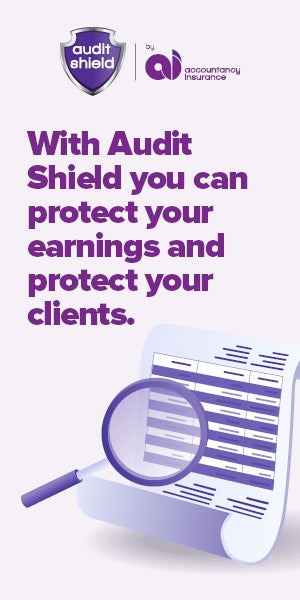Why accountants should recognize the bias in accounting standards and use it to our advantage

Accounting standards have focused on the balance sheet, says Philip Maguire, CPA, CA, yet the effort to match book value to market value has been a failure
 |
Philip Maguire, CPA, CA, is a principal in Glenidan Consultancy Ltd. |
AS ACCOUNTANTS we are trained to report financial results in an unbiased manner. Equal weighting should be assigned to bad news as well as good news. We have many obligations to be transparent, by applying honesty and objectivity, when discharging our duties. Our professional membership, the accounting standards published for public and private companies, and the regulatory bodies affirm these requirements.
However, there are biases that deceive the preparer and user of financial statements. In many cases these biases cannot be eliminated. Accountants must be aware of these biases when complying with accounting standards. This is especially important when compliance with a standard does not adequately explain the underlying business drivers — the form-over-substance conundrum. When it comes to recognizing bias, ignorance is not bliss; rather, it can be a sign of incompetence.
It is a challenge to write generally accepted accounting principles (GAAP). The standard has to be general enough so that it applies to all filers and yet sufficiently specific to allow comparability between filers. A tall order. And, other than the Presentation and Disclosure assertions, all accounting standards favour either the balance sheet or the income statement. Let’s explore this further.
Why today’s accounting standards focus on the balance sheet
The Stock Market crash of 1929 in the US emphasized the need for a common set of accounting standards. Up to the 1960s in Canada and the US the standards were focused on measuring income; after all, we had two world wars to pay for (primarily through the collection of income taxes).
However, by the 1970s it was apparent that the ballooning balance sheets required attention. In 1975 the standard setters had a rude awakening when they realized that the book value (net assets on the balance sheet) represented only 84% of the market value (share price by the number of shares outstanding) of the Fortune 500. This gap between book and market value was recognized as a threat to the relevance of financial reporting, a word no one likes to hear.
In the early 1980s the Financial Accounting Standards Board in the US defined the three principles of financial reporting, that being:
- Assets and liability matching;
- Income as the residual; and
- The book value of an organization should correspond to its market value.
This explains why so many accounting standards written in the last 30 to 40 years have a balance sheet focus. Furthermore, the preference for fair value reporting, as required for example by the financial instruments standards, break the link to historical cost balances and in theory should encourage a closer move of the net equity to market value.
So how have we done?
Matching book value to market value has been a failure
A recent comparison of the S&P 500 highlighted that the book value of these organizations only represented 17% of the market value. Accounting standards that are supposed to breach the divide between book and market value have been a failure that is not going unnoticed. In a 2019 letter to Berkshire Hathaway’s shareholders, Mr. Warren Buffet stated that they were no longer reporting year over year changes in book value. He commented “the fact is that the annual change in Berkshire’s book value … is a metric that has lost the relevance it once had.”
There are many reasons why this attempt at matching the book value to market value has been such a failure: the principle of conservatism (lower of cost or market); the inability to recognize internally generated goodwill; and fair value standards that only permit costs (rather than economic value) to be capitalized contribute to this problem. We will explore these matters in a later article.
So what has the response been to these biases? Most organizations use GAAP as a springboard to report non-GAAP measures such as EBITDA (earnings before interest, taxes, depreciation and amortization). Such measures allow the filer to customize their reporting in order to explain core or underlying earnings.
However this approach comes with its own biases. The most significant bias is that, unless all filers use the same EIBTDA assumptions, comparability between filers is challenging. And many filers have been caught changing their assumptions period over period without disclosing the impact on the revised EBITDA calculation or a reconciliation to the nearest GAAP measures.
A recent example is the dispute between CI Financial and the rating agency Morningstar DBRS. The rating agency was uncomfortable with CI’s financial reporting of “adjusted” EBITDA which was even further removed from EBITDA. The upshot of this argument was that CI Financial refused to pay for Morningstar’s rating. Morningstar replied that they would continue their analysis without pay!
Using bias to your advantage
So where does this leave the accountant and the accounting profession? Firstly, recognize the biases implicit with any numbers. Once this bias is acknowledged, assess how far removed the results are from the accounting standards. Significant differences between the results and the accounting standard should be supplemented by notes to the financial statements, or the management, discussion and analysis, to explain the assumptions supporting the differences.
And finally, don’t become absorbed with the accounting standards until you understand the business. Too many accountants do not have a concise understanding of those key (usually only two or three) reasons why their business exists. Only by understanding the operations of the organizations can the accountant prepare, or analyze, the financial statements and supporting documents.
Using bias to your advantage can turn the tables on ignorance and make you the expert.
Philip Maguire, CPA, CA, is a principal in Glenidan Consultancy Ltd. His practice focuses on internal controls over financial reporting for a number of publicly listed companies on the Toronto Stock Exchange. Philip teaches a number of CPD (continuing professional development) courses in Canada, England & Wales and Ireland.










(0) Comments